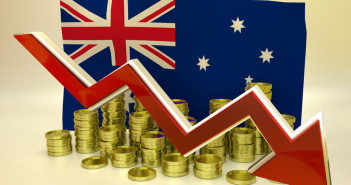AUD/USD is now trading at 0.7950 after a “dead cat bounce†off the support line of 0.7940. The pair seemed to have settled above 0.80 and even temporarily touched 0.81, but it fell quite quickly.
The battle for the round number is going on for a few months. Each time that the pair seems to settle at that level, something comes along.
This time, the Fed is the main culprit. The US central bank is still on track to raise rates in December, despite lower inflation. What about 2018? No changes there either: 3 hikes remain on the menu. They lowered the long-term interest rate, but that’s long-term, not now.
The Fed seems to ignore lower inflation, or at least feel confident that inflation will, at some point, eventually rise. When pressed, Yellen said that lower price rises this year remain a “mysteryâ€. It is harder to point the finger at one-off causes.
So, the US dollar shot higher across the board. No currency was spared the might of the greenback. However, the Australian dollar stands out with bigger losses than its peers, major currencies and commodity currencies alike.
The Aussie suffers from its own central bank. Contrary to Yellen, RBA Governor Phillip Lowe seems quite reluctant to raise interest rates. In a speech in Perth, he said there is a higher chance that rates will go up rather than down, but nothing is due in the near future.
Under these circumstances, it is easy to see why AUD/USD does not have room to conquer 0.80. It had already shown its weakness in reaction to the jobs report. But can it fall? That is another question.




